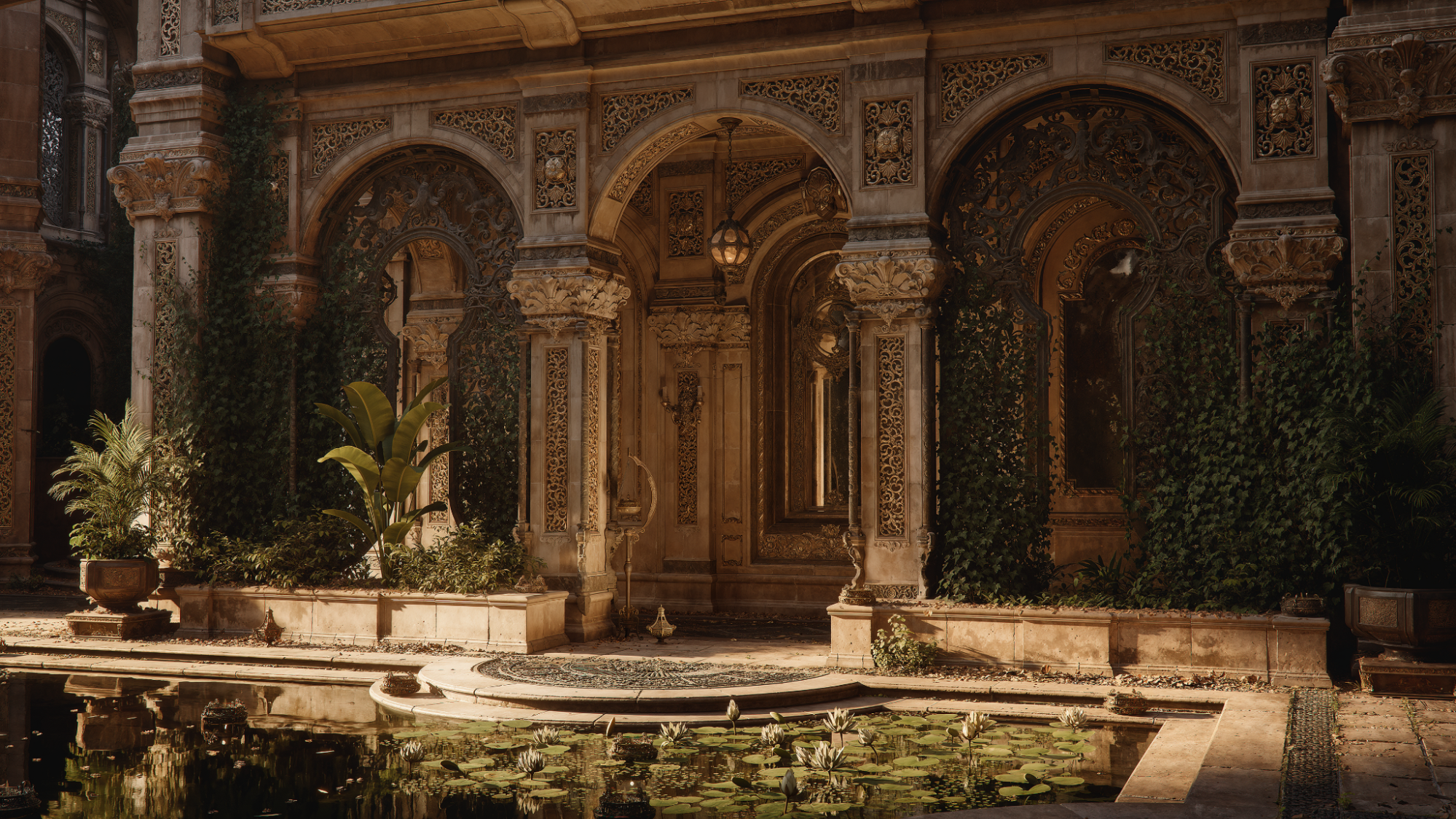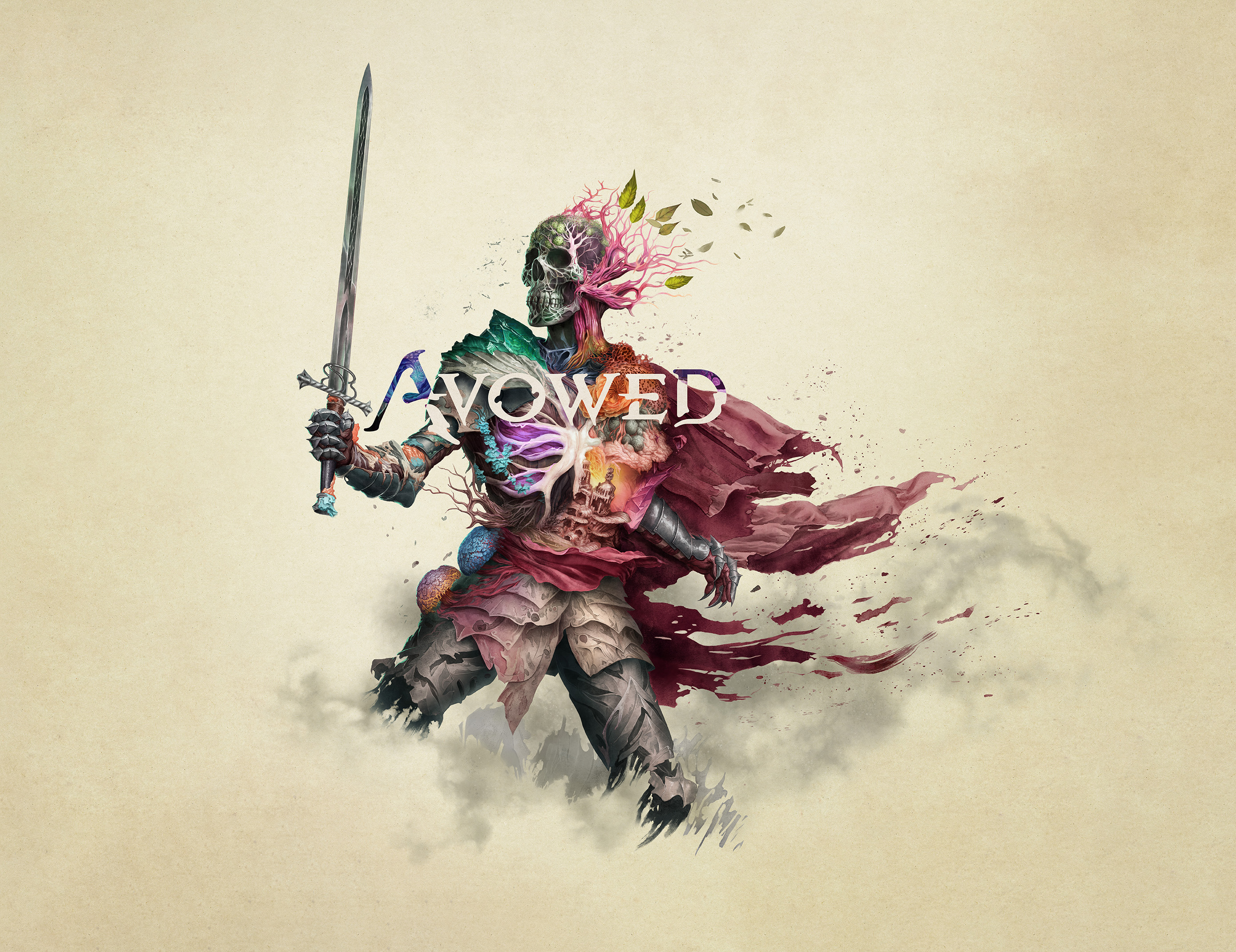
When Skylight Collective set out to craft the key art for Obsidian Entertainment’s fantasy RPG, Avowed, the art team knew they weren’t making just another traditional video game box art. The result – a striking, watercolour-inspired image that feels at once both mysterious and evocative, abstract and traditional – sets Avowed apart in the world of fantasy role-playing game. But how did it come to life?
To understand the creative process behind Avowed’s key art, I spoke with the creatives responsible, including David Cipriano, Executive Creative Director at Skylight Collective, and Carrie Patel, Avowed's Game Director. This is a piece of art that took me back to the heyday of Atari pack art; the Avowed artwork is a naturalistic image designed to tell a story as much as promote a video game.
Below I dig into how this art was made and why it feels so fresh and unique, but to get a rounded view, read our Avowed review, which shows just how closely the Skylight Collective team have come to representing the game's weird, colourful world in a single image.
Avowed: inspirations behind the art
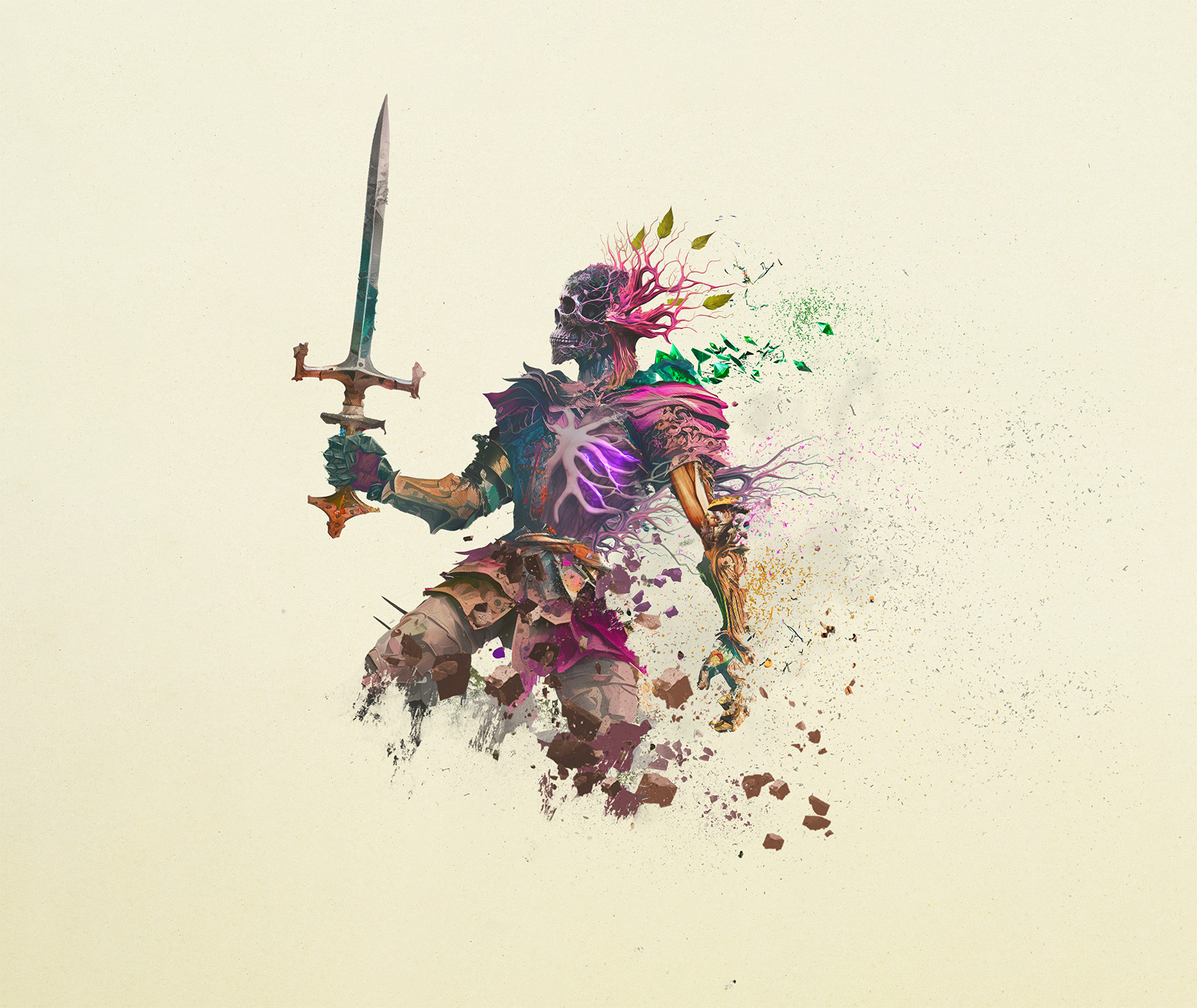
I ask David Cipriano where the inspiration came from for the Avowed key art. "Man, that's a real oddly loaded question of like, where the ideas come from,” David reflects. “But a lot of this was inspired so heavily by the game art itself, or the game itself.”
Unlike traditional fantasy role-playing game key art – often featuring a party of companions, an expansive landscape, or a heroic central figure – Avowed's key art had to capture something different. The game, as Carrie Patel describes it, is “weird and beautiful, totally disruptive”. The team at Skylight knew they had to reflect this approach and create something fittingly surreal.
"When we got Skylight’s initial pitches back, I remember there was a grid with a couple dozen different options,” Carrie recalls. "There were several much more traditional takes on a fantasy RPG, but almost all of us, when we shared our feedback, said, 'Man, this one really speaks to me.'"
The image the team gravitated toward wasn’t about showcasing a roster of characters or mapping out the setting in a literal sense. Instead, it sought to capture the "spirit of the game," shares Carrie, and not descriptively represent what players experience. Avowed's key art is a feeling for the game.
Get the Creative Bloq Newsletter
Daily design news, reviews, how-tos and more, as picked by the editors.
Avowed's art was a risk worth taking
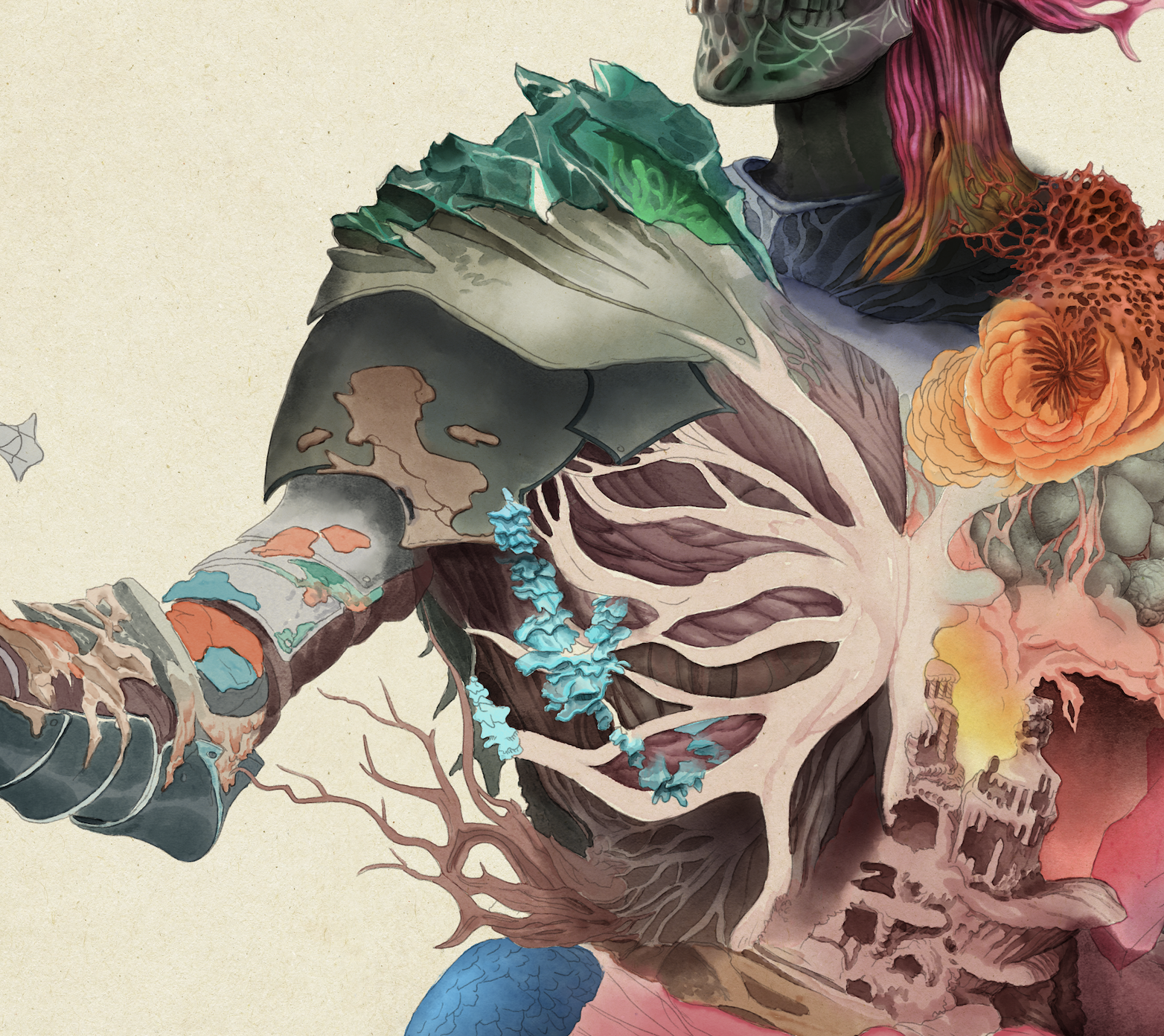
Going with an unconventional approach wasn’t without its risks. "It felt like a risky decision, but one that just felt right," Carrie says. "And as you noted, our game is weird, so why not embrace that with the key art?"
David agrees, saying: "I think the job of our art, and the brief the Obsidian and Xbox teams gave us, was ‘Help us present art in a new way, in a different way'."
While Avowed’s key art may not spell out every detail of the game’s world, it's rich with subtle clues for observant players to pick up on. David points to one key inclusion: "The biggest one we wanted to make sure people saw was the Adra [the game's organic crafting material]. We’re fans of the franchise, and making sure we saw that nod felt really great."
Other hidden elements include the eerie fungal growths that symbolise the Dreamscourge, a critical aspect of Avowed’s world. As Carrie explains, “On one side of the figure’s body, you have all those fungal growths that represent decay. But then on the other side of the figure, sprouting out of their head, you have this sort of pink, almost flesh-like tree with these leaves. That speaks to both the transformational elements at the heart of the game and how they are destructive, but also creative."
Making Avowed's key art
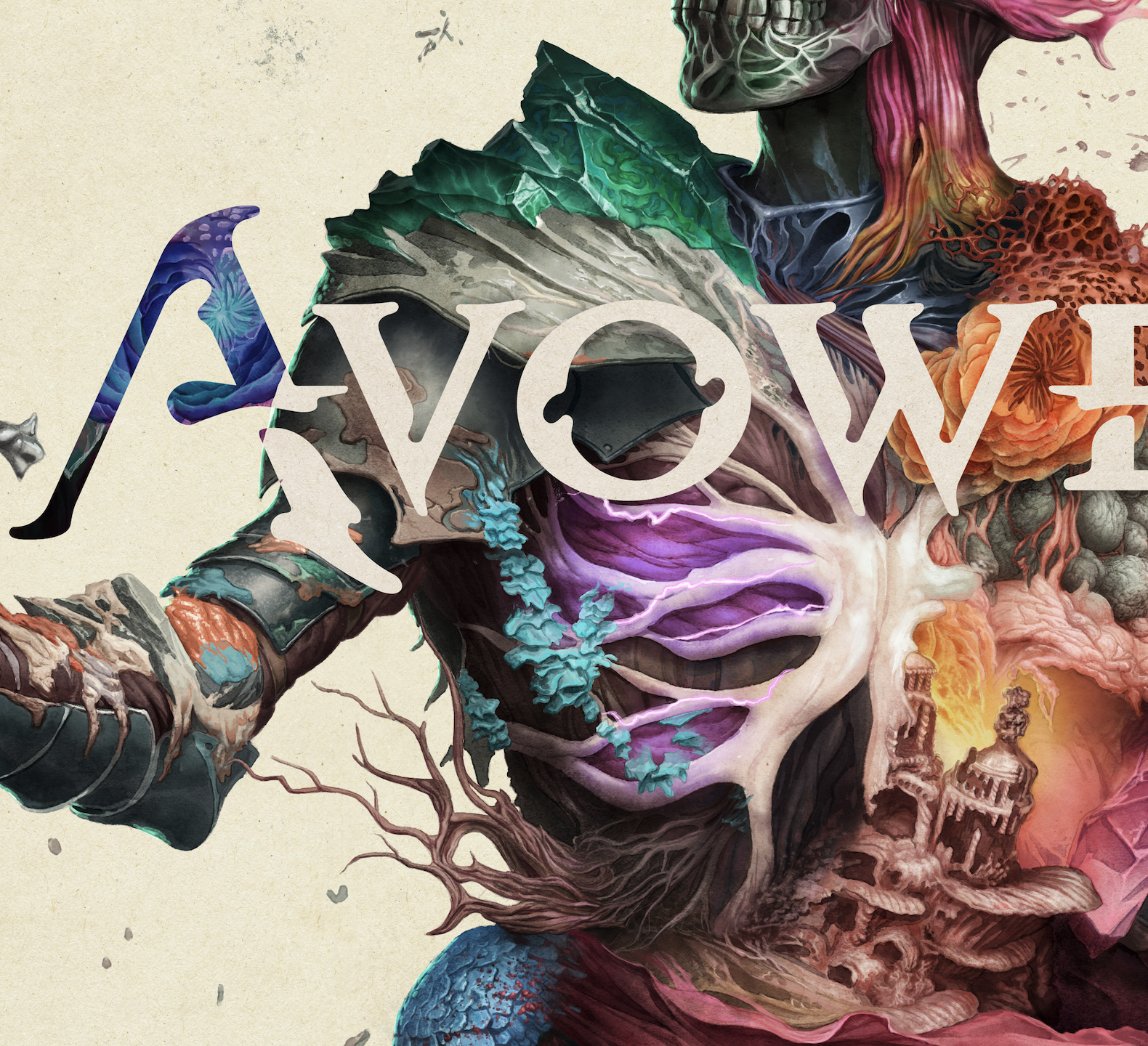
Once Skylight and Obsidian locked in on the direction, the next challenge was execution. "We photobash in Photoshop," David explains. "We pull a mixture of concept art from the dev team, find supplemental imagery, and have artists on staff fill in the gaps."
But Avowed’s key art called for something beyond a digital composite. "We started with photobashing, continued to make it more and more game accurate, and then had a whole conversation about finish style," David says. "Based on some of the lore books and other elements in the game, we realised this naturalist approach was what would bring it all home."
To achieve this, the team studied classical watercolour painters, particularly naturalist illustrators like John James Audubon, whose use of vibrant colour matched to heightened realism is evident in the final Avowed art. The artists at Skylight Collective even created custom brushes to emulate watercolour washes and inks, ensuring the digital art had an organic, painterly quality. "Then we just painted," explains David, saying, "[we] quite literally painted over the art we had been sketching".
David tells me he has a background in fine art, and this work involved channeling everything he's learned. He was able to refer to other artists work and styles, or mediums and workflows, to "bring distinction to the art".
But, he says, starting with an image of a head on fire and working from there was unique, and something Obsidian was onboard with early on. He reflects: "I think the bigger part is, if everybody can get on board with creating a little bit of weird and being a little uncomfortable and taking some risks, we can always make distinctive art."
It's reminiscent of older RPGs, which is part of our bread and butter. The art style makes it feel like a callback to classic fantasy
Carrie Patel, Game Director, Obsidian Entertainment
For David and the Skylight team, a driving factor behind the Avowed artwork was to create a callback to classic RPGs, traditional gaming and literature, something Obsidian itself also loves to play on in its games.
One of the reasons Avowed’s key art resonated so strongly with the team at Obsidian was its nostalgic quality. "There’s something that feels kind of literary about it," Carrie tells me. "It's reminiscent of older RPGs, which is part of our bread and butter. The art style makes it feel like a callback to classic fantasy."
David adds the Avowed key art hits these notes, "Without it becoming the montage we've all seen before; we've all seen variations on the montage," and adds, "This is different. The fact that there's a skull – it’s always immediately activating for an audience. It gives us that throwback while being pretty present and contemporary."
Designing for a digital age
Despite its classical inspiration, Avowed's key art needed to function in a modern, digital-first landscape. As physical media and game boxes become less common, the use of art to promote a game becomes more complex "The box is one of many placements," David explains. "We actually prototype it against probably six to eight different placements – Xbox dashboards, game store pages, Game Pass – so we ensure it’s modular and adaptable."
And it’s not just in digital form. The key art has even found life as a massive hand-painted mural in Berlin, as well as on large neon-lit billboards in New York and London. Carrie notes, “It looks fantastic."
One of the biggest challenges in creating key art is knowing when a peice is finished. This is a struggle many artists have, but when you're creating an organically inspired image, such as the Avowed key art, that degrades and tells a story, know when to stop can be an issue.
"A lot of it is conversation," David says. "It's not one person making the art – it's a team effort. We push things purposefully to test boundaries. At one point, we really pushed the colour hard, but we realised it wasn’t right. It wasn’t naturalist enough; it wasn't connecting back to the overall direction. But it was worth testing."
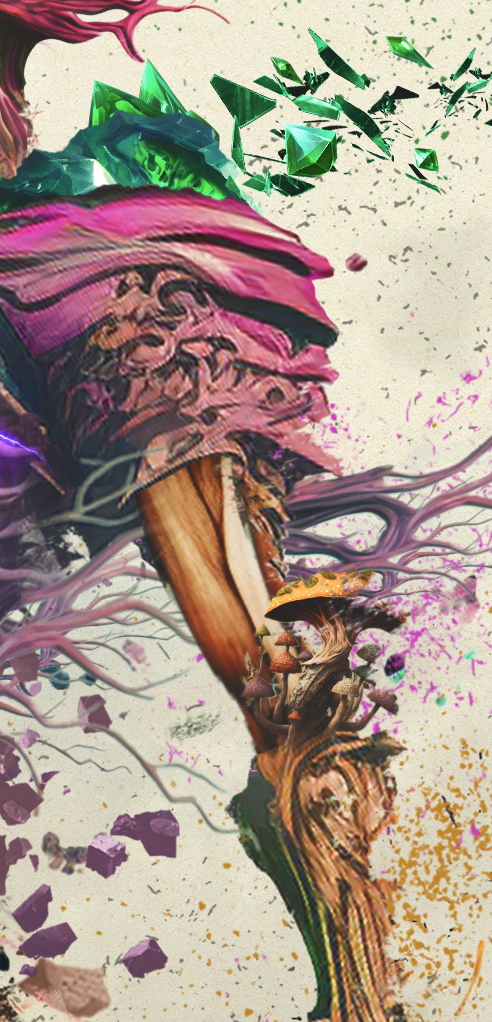
What is the future for game art?
Avowed’s key art represents a shift towards more expressive and less formulaic imagery in the game art and promotional art. David believes that taking creative risks is what leads to truly distinctive artwork. He tells me, "If everybody can get on board with creating a little bit of weird and being a little uncomfortable, we can always make distinctive art."
Carrie sees the piece as a reflection of Avowed’s storytelling. “You’re not going to squint at this so hard that you can spoil the entire story for yourself,” she says. “But you’ll see a lot of specific elements from the game. There’s also a sense of ambiguity, which is very true to Avowed itself."
For David the project was a joy, and whenever he reflects on creating the art a broad smile appears across his face. "It is really unexpected to be able to make something a little bit unexpected," he says, explaining the who process enabled the team ton ""it really tapped into the art the inner art geeks in all of us" as the team sort to tap into, and emulate, the art of early 1900 and late 1800 painters.
In an era when video and digital marketing can dominate, and often look safe, Avowed's key art stand out as a bold statement. When Obsidian first revealed the art at the end of 2024 fans instantly took to it; it's a reminder that, when given the freedom to experiment, game art can still surprise, inspire and, perhaps, pick up an Xbox controller. Or at least, load up one of the best digital art softwares and start painting.
Do you love the work Skylight Collective did on bringing Avowed to life in this surreal art? Let us know your thoughts in the Comments section below.

Thank you for reading 5 articles this month* Join now for unlimited access
Enjoy your first month for just £1 / $1 / €1
*Read 5 free articles per month without a subscription

Join now for unlimited access
Try first month for just £1 / $1 / €1

Ian Dean is Editor, Digital Arts & 3D at Creative Bloq, and the former editor of many leading magazines. These titles included ImagineFX, 3D World and video game titles Play and Official PlayStation Magazine. Ian launched Xbox magazine X360 and edited PlayStation World. For Creative Bloq, Ian combines his experiences to bring the latest news on digital art, VFX and video games and tech, and in his spare time he doodles in Procreate, ArtRage, and Rebelle while finding time to play Xbox and PS5.
You must confirm your public display name before commenting
Please logout and then login again, you will then be prompted to enter your display name.
